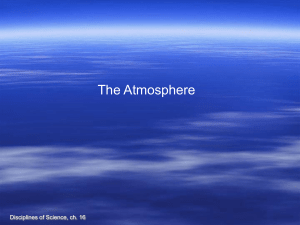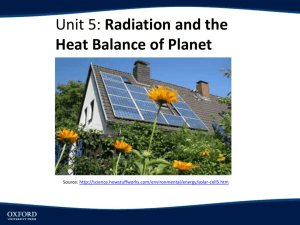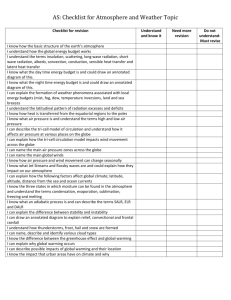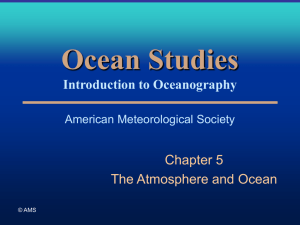msword
advertisement
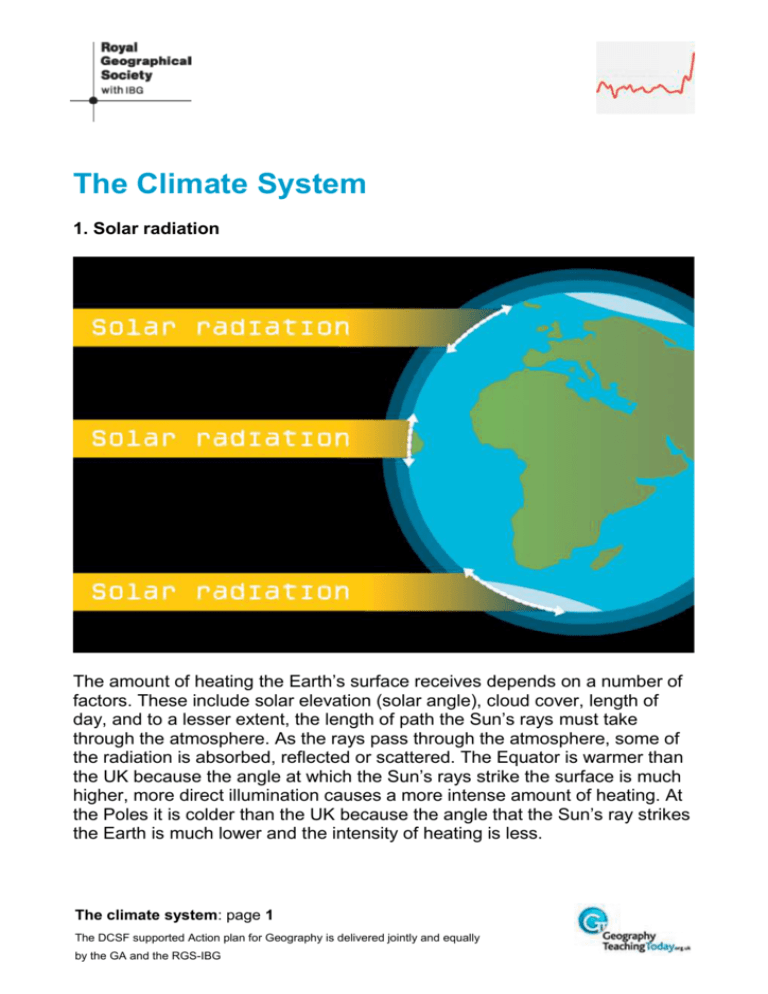
The Climate System 1. Solar radiation The amount of heating the Earth’s surface receives depends on a number of factors. These include solar elevation (solar angle), cloud cover, length of day, and to a lesser extent, the length of path the Sun’s rays must take through the atmosphere. As the rays pass through the atmosphere, some of the radiation is absorbed, reflected or scattered. The Equator is warmer than the UK because the angle at which the Sun’s rays strike the surface is much higher, more direct illumination causes a more intense amount of heating. At the Poles it is colder than the UK because the angle that the Sun’s ray strikes the Earth is much lower and the intensity of heating is less. The climate system: page 1 The DCSF supported Action plan for Geography is delivered jointly and equally by the GA and the RGS-IBG 2. Atmosphere High temperatures over the equator and low temperatures over the poles result in an imbalance of energy. However, heat energy at the Equator is transferred towards the Poles by global wind systems. As the Earth is rotating the circulation between the Equator and the Pole is split in three ‘cells’ in each hemisphere - the Hadley, Ferrel and Polar cells. These circulations of high and low pressure and the winds they generate affect the climate in different places. The climate system: page 2 The DCSF supported Action plan for Geography is delivered jointly and equally by the GA and the RGS-IBG 3. The global heat conveyor As climate is controlled partly by the transport of heat over the planet so ocean currents are important. The largest part of the heat transport system is known as the ‘the Global Heat Conveyer’. Differences in seawater density in different parts of the world cause flow from ‘high pressure’ (e.g. high density) to ‘low pressure’ (e.g. low density) regions, as in the atmosphere. These density changes are caused by changes in salinity (saltiness) and temperature. There is also a constant exchange of heat and water between the ocean and the atmosphere that affects climate. The climate system: page 3 The DCSF supported Action plan for Geography is delivered jointly and equally by the GA and the RGS-IBG 4. The greenhouse effect Solar radiation passes through the atmosphere in the form of lightwaves most of this radiation is absorbed by the earth heating it up Some of the energy that has warmed the Earth is radiated back into space in the form of infrared waves Some of this outgoing infrared radiation is trapped by the Earth’s atmosphere and warms it Greenhouse gases remain in the atmosphere for long periods, and act as a ‘blanket’ around the earth absorbing the infra-red radiation from the earth and warming the earth’s surface. Without this natural greenhouse effect, the earth would be about 30°C colder. The burning of fossil fuels and deforestation has released large amounts of carbon dioxide and methane and other greenhouse gases. It is the increase in these gases which have led to warmer temperatures. The climate system: page 4 The DCSF supported Action plan for Geography is delivered jointly and equally by the GA and the RGS-IBG





